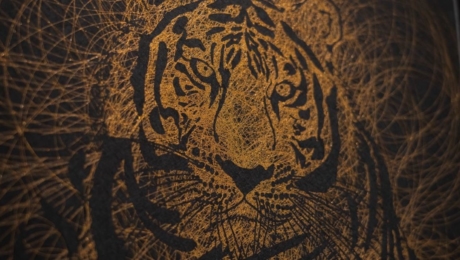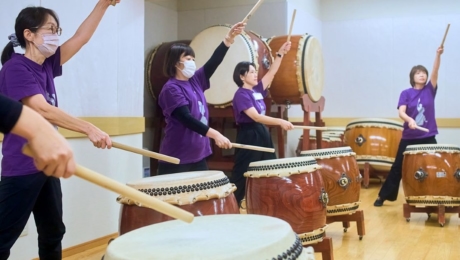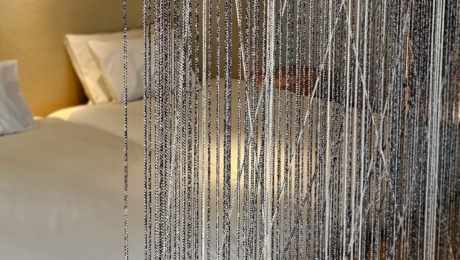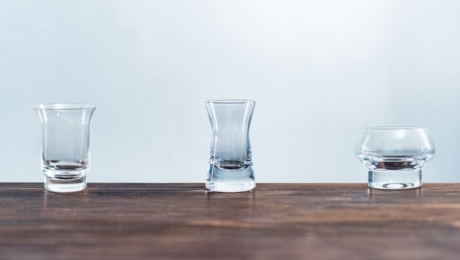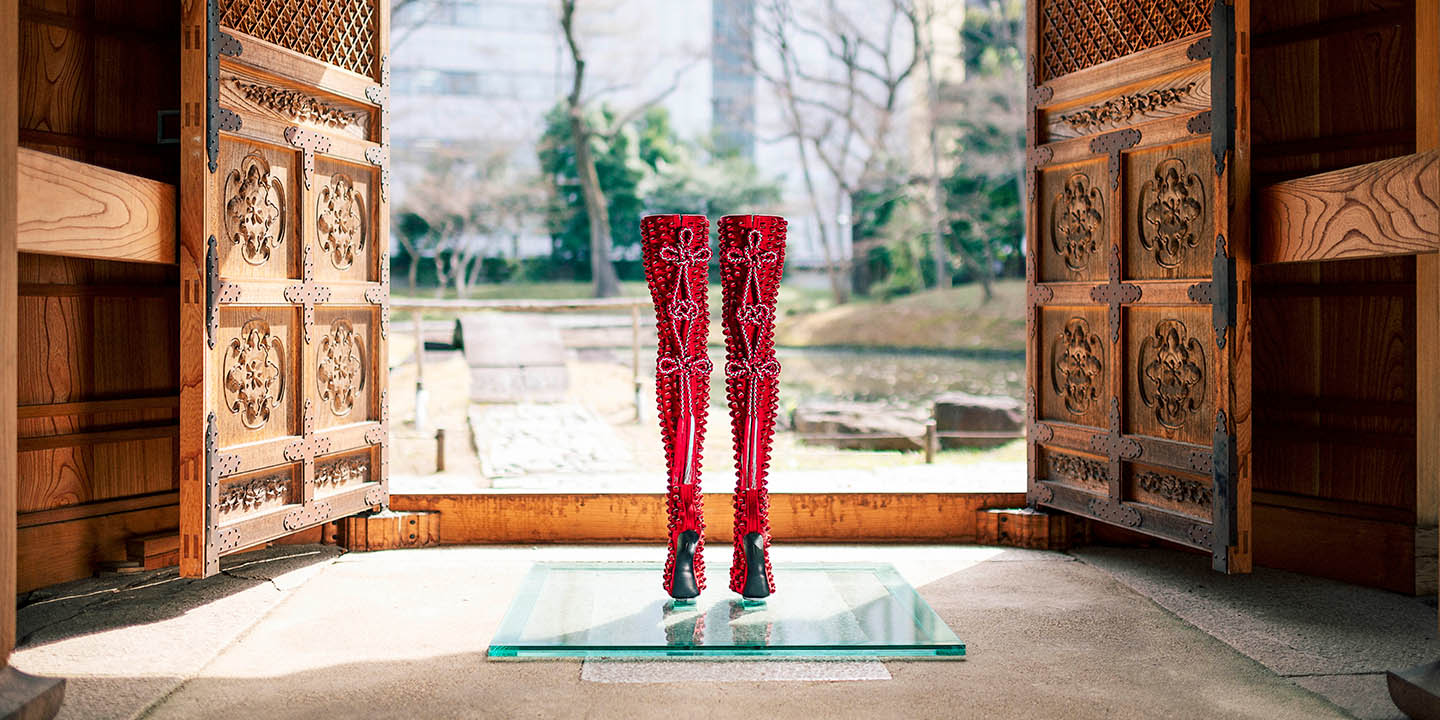

The Constantly Evolving Sophistication of Edo
2023.03.31
LIFE
Braided kumihimo cord is famous for its use in the court garb of Prince Shotoku (574-622). It was brought to Japan from China through Korea during the Asuka period, the 6th – 7th century, along with Buddhism.
Unique Japanese kumihimo techniques were then developed. In the Kamakura period (1185-1333), it came to be used for armor, swords, and other military gear. The late Edo period saw the production of a great number of obijime decorative cords.
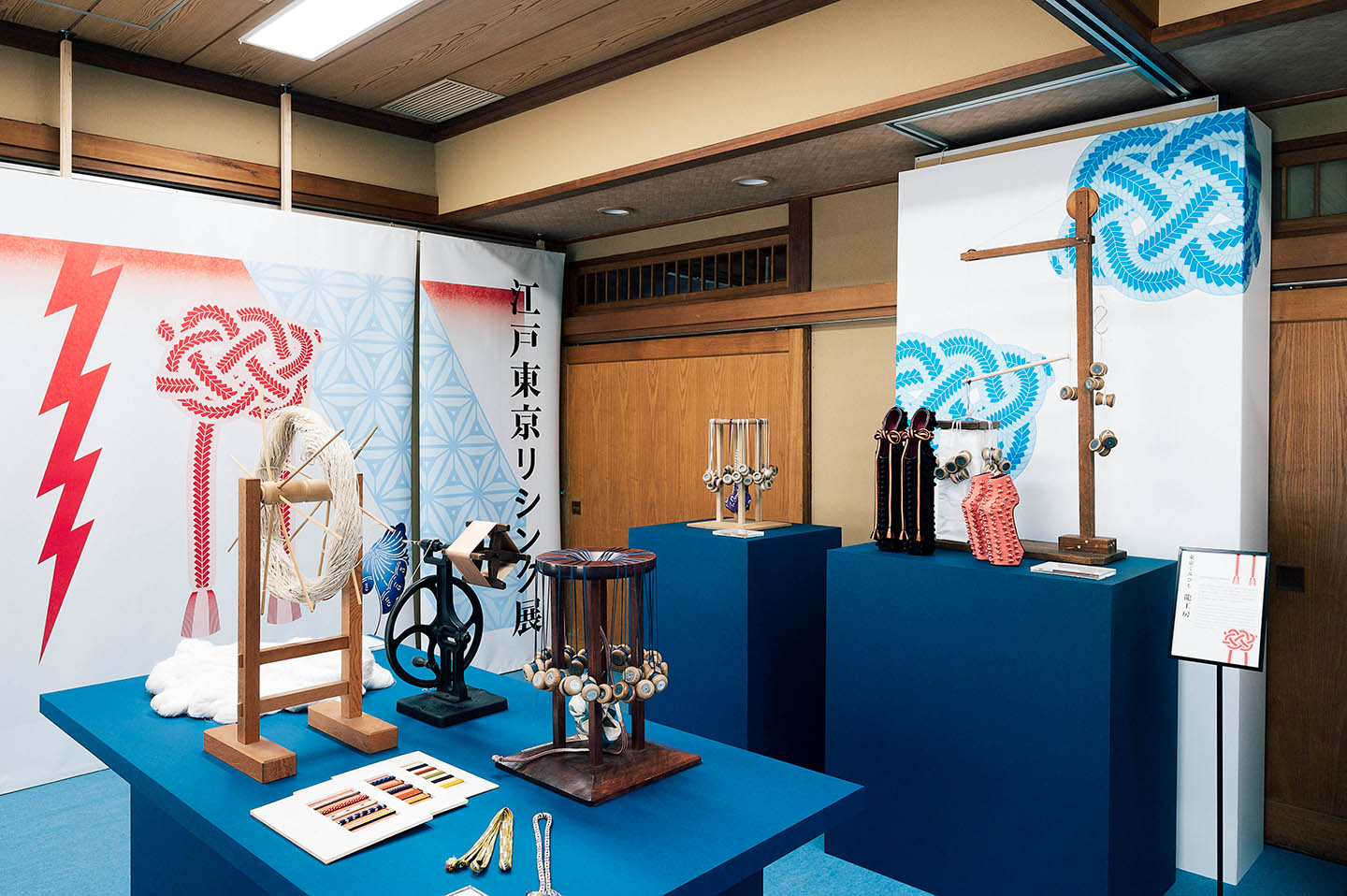
Ryukobo was founded in 1889. For over 130 years, it has carried on the culture and techniques of kumihimo, passing on over 100 traditional braiding techniques such as mitake-gumi, kara-kumi, marugenji-gumi, yurugi-gumi, suruga-gumi, yotsu-gumi, and yatsu-gumi, and reproducing the kumihimo used in kakemamori (necklace amulets), weapons, armor and other military gear eight centuries earlier. It has also actively explored new directions, such as creating the medal ribbons used in the 2019 Rugby World Cup held in Japan.
This year’s exhibition is the third time that Ryukobo has collaborated with Noritaka Tatehana. Ryukobo supplied kakuhimo (square cord), braided using a unique technique developed last year. Not only are the colors on the front and back different, as if to represent the sense of sophistication of the Edo period, but there are knots precisely placed at 60 millimeter intervals to create a three-dimensional texture and a unique effect.
Noritaka Tatehana used these kakuhimo from Ryukobo to create heel-less shoes that extend all the way to the hips, a design that he hasn’t produced since he created same type of heel-less shoes in 2012.
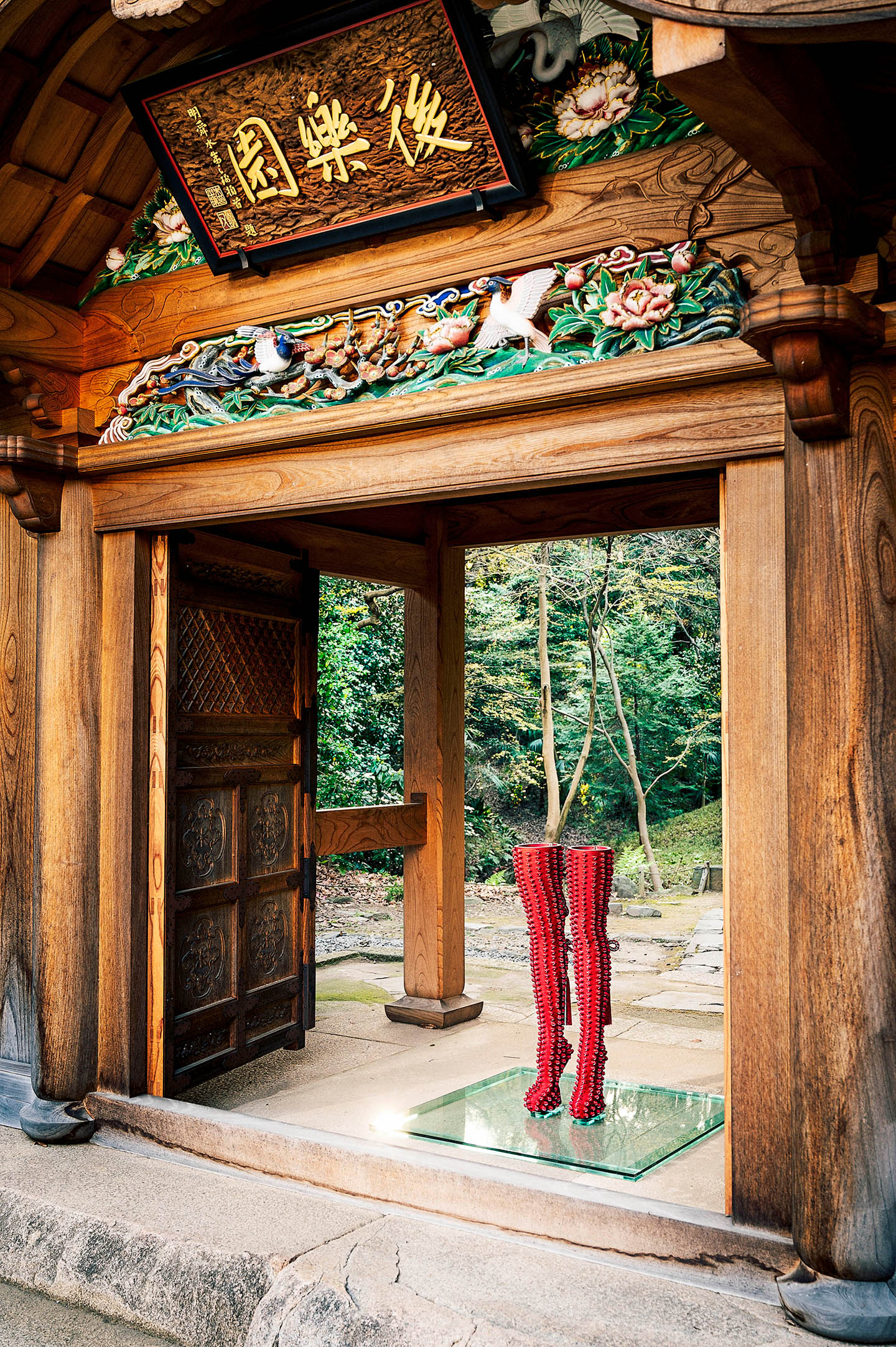
The scale of these heel-less shoes dwarfs those of last year, standing 80 centimeters high. As they extend from the hips towards the toes, they create the impression of the wearer’s legs seamlessly transforming into shoes, and together with the red color of the kakuhimo, they present a seductive appearance.
Each shoe contains roughly 120 rows of kakuhimo, so it took almost to the day of the Edo Tokyo Rethink opening for Ryukobo’s Ryuta Fukuda and Noritaka Tatehana to complete them.
When asked about this collaboration, Fukuda simply replied, “It’s the culmination of all of our efforts.”
“In terms of knots, I tied 120 x 9=1080, 120 x 8=960…a total of 2,040 knots. When you’re working with that many knots, if even one of them is just a bit off but you keep on working anyway, you’ll ultimately end up with something that is beyond repair. Keeping constantly focused in order to prevent that was hard, but looking at the final results, I was amazed. It went far beyond the scale of what we’d done before, or even what I’d imagined. This is my own personal interpretation, but I don’t think they’re typically sized heel-less shoes. Instead, I think their format is closer to Tatehana’s own heart.”

The changes weren’t limited to the size of the piece, but also the decorative knots themselves. Last year’s shoes were made using thick, flat cords, tied on the front of the heel-less shoes. This year, round cords were used, and the knots were tied at the back. Tying at the front and back produce different effects, so the kumihimo plays a major role in the impression the shoes make.
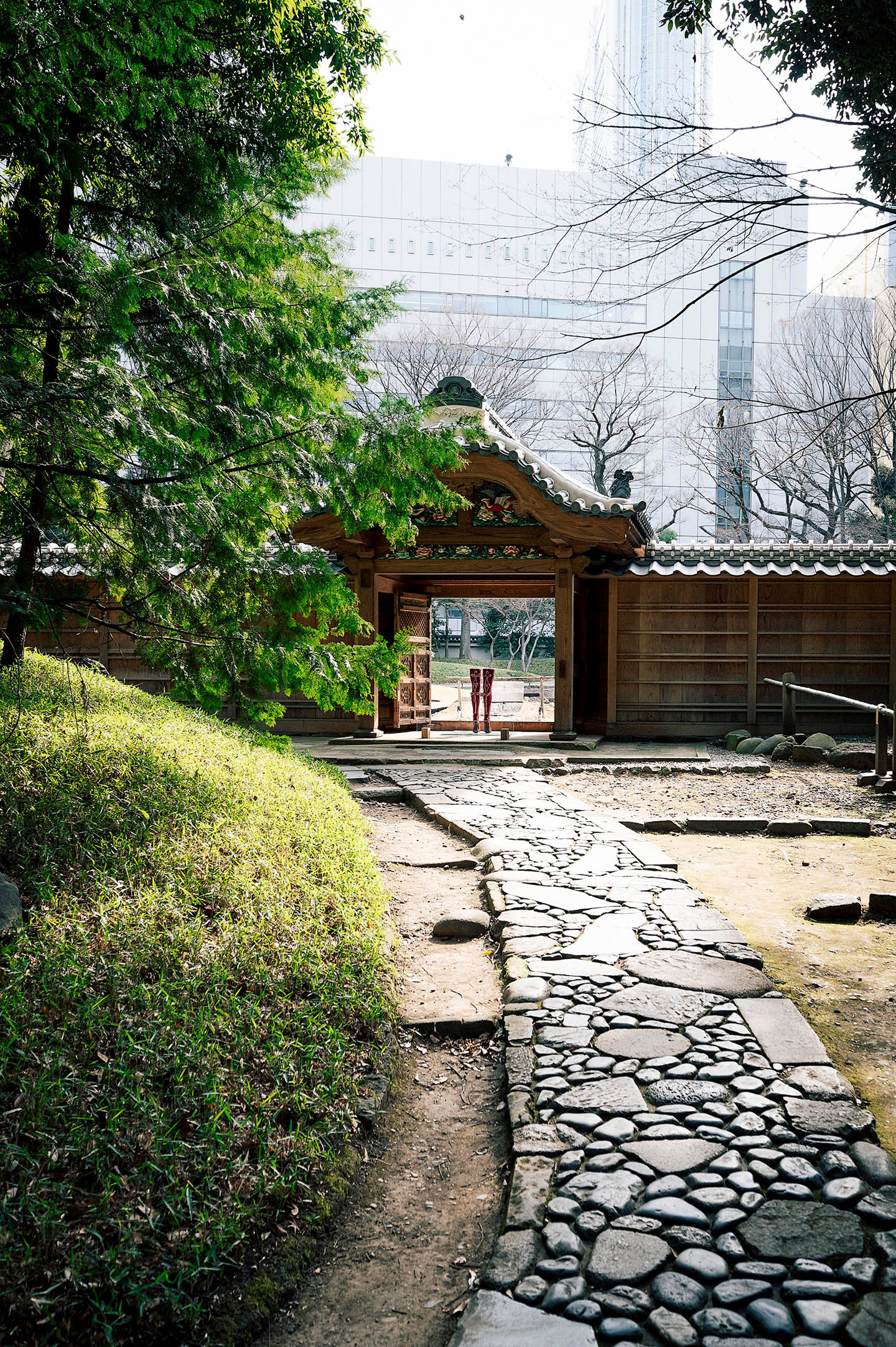
The heel-less shoes were displayed in Karamon, not far from the East Gate.
Karamon burnt down in the bombing raids of 1945, leaving only the stone steps and masonry work, but restoration work began in 2019, and the rebuilding was completed the following year. The bold form of Karamon acted almost like a frame for the heel-less shoes placed before it, with the gate carving out a space that the shoes boldly occupied.
Kumihimo are gaining greater recognition abroad through their use in the artworks of the Edo Tokyo Kirari Project. The number of people and companies proposing collaborations with Ryukobo is rising, but while Fukuda is expectant, he also feels a sense of crisis.
“The number of silk growers in Japan continues to fall. To tackle this problem, we, with the aid of many others, are carrying out the “Edo de Yosan no Kai” (“Edo Sericulture Project”) initiative. In this project, elementary school students learn about the whole process of silk product creation, from growing mulberry trees and harvesting their leaves to producing silk, and turning it into completed products. I believe the use of pure silk in these wonderful heel-less shoes is extremely significant for our industry.”

Photo by GION
Special Movie
Noritaka Tatehana x Tokyo Kumihimo Ryukobo
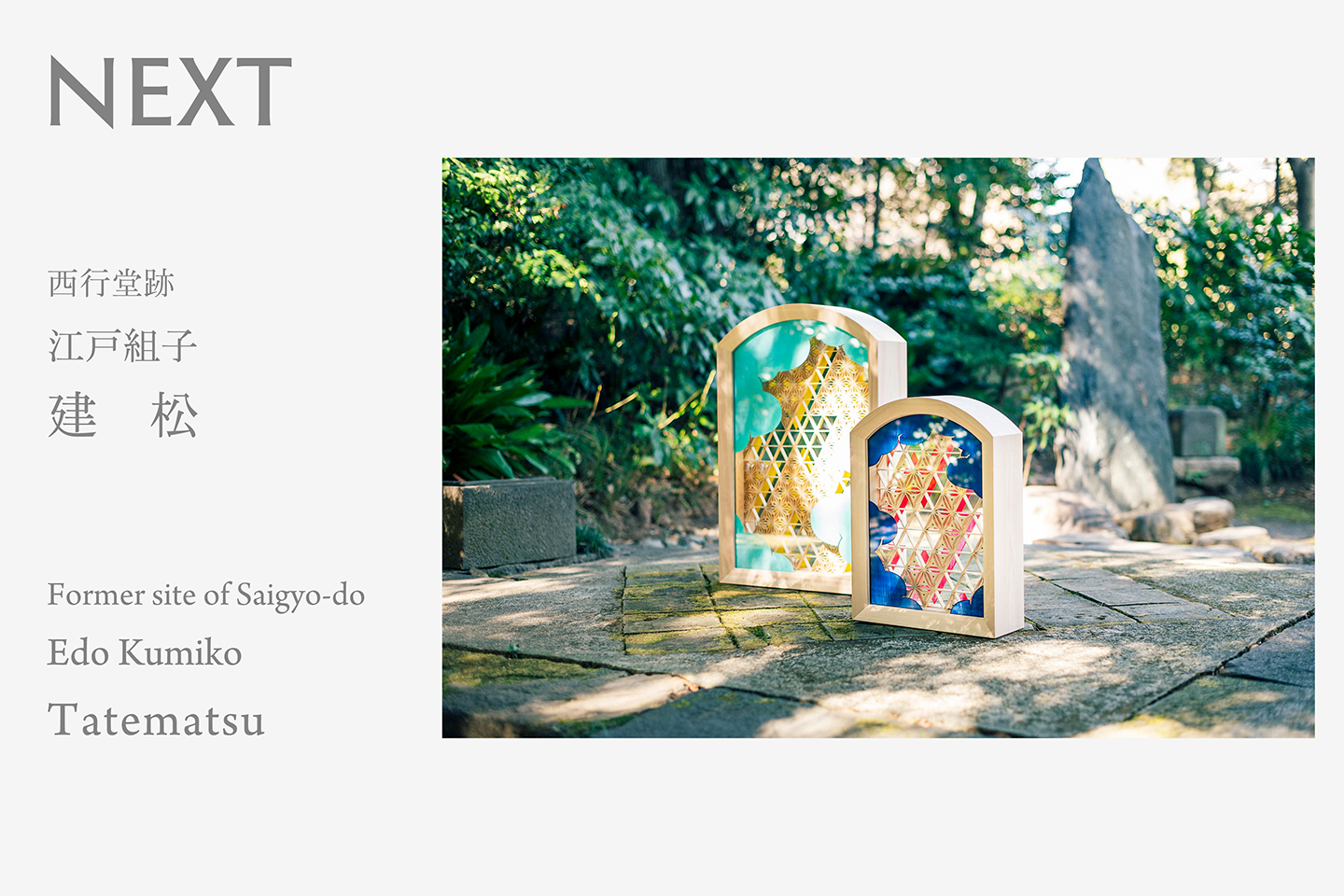
NEXT: 江戸組子 建松 / Edo Kumiko Tatematsu
https://en.edotokyokirari.jp/column/life/edotokyorethink2023-kumiko-tatematsu/



